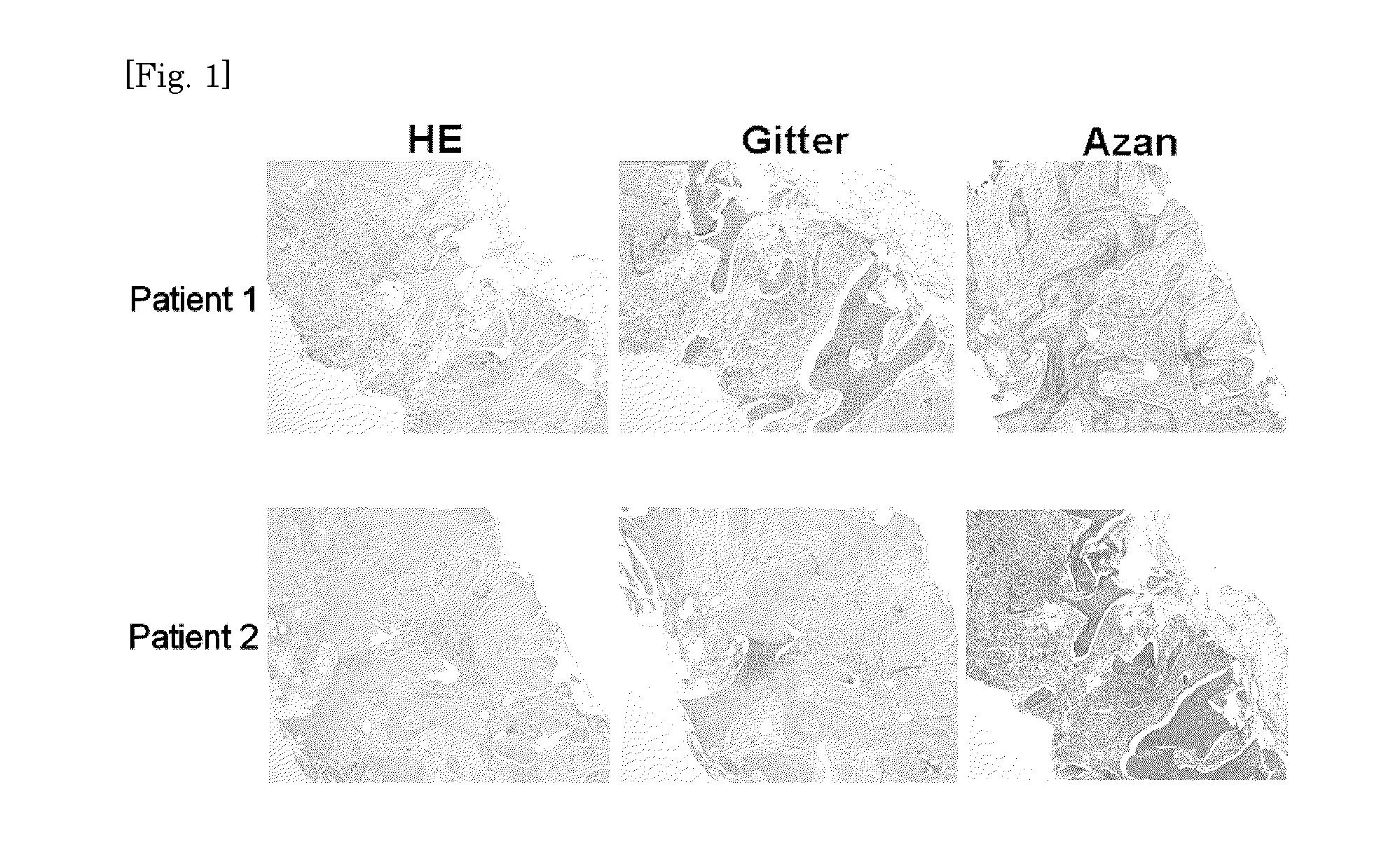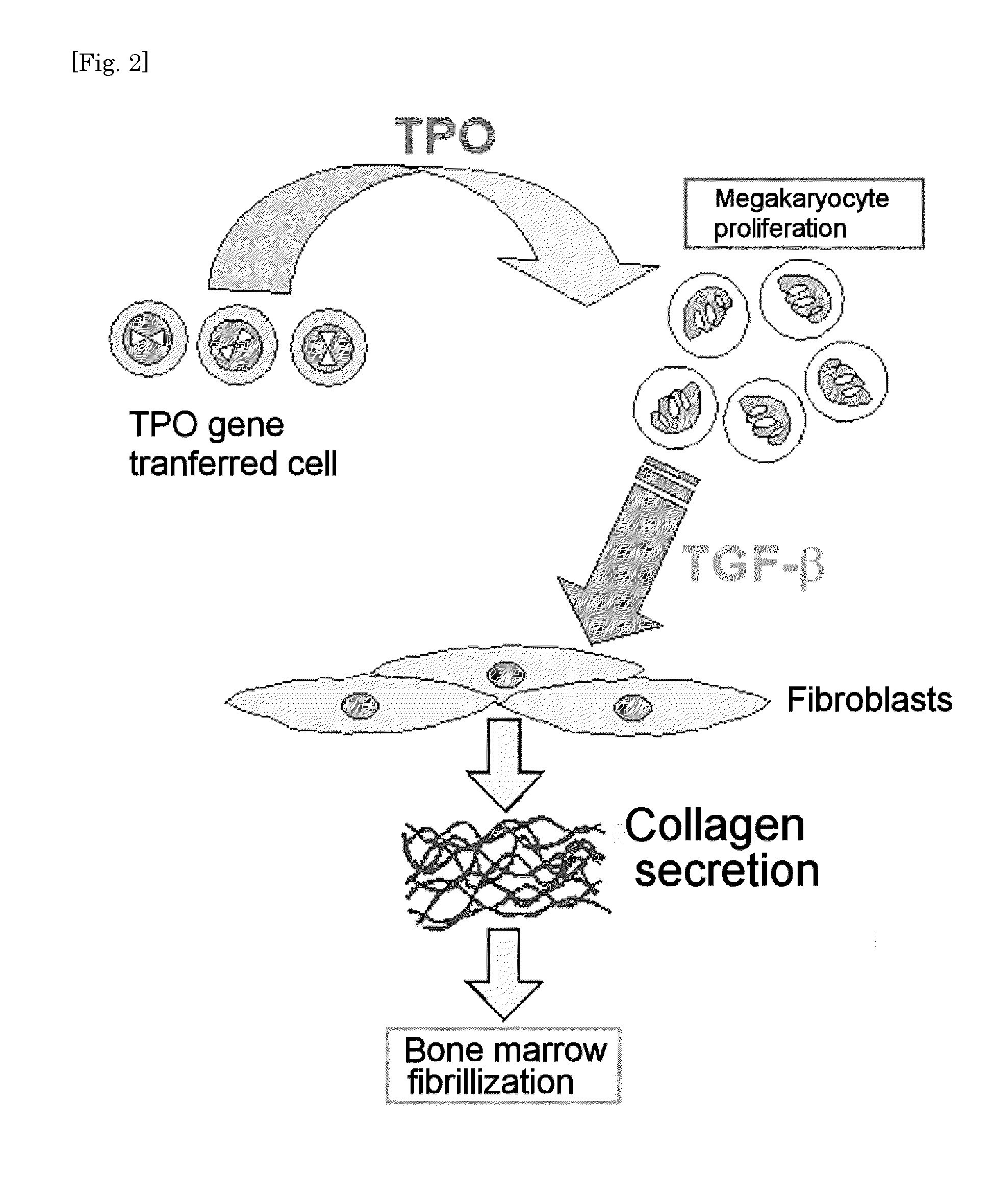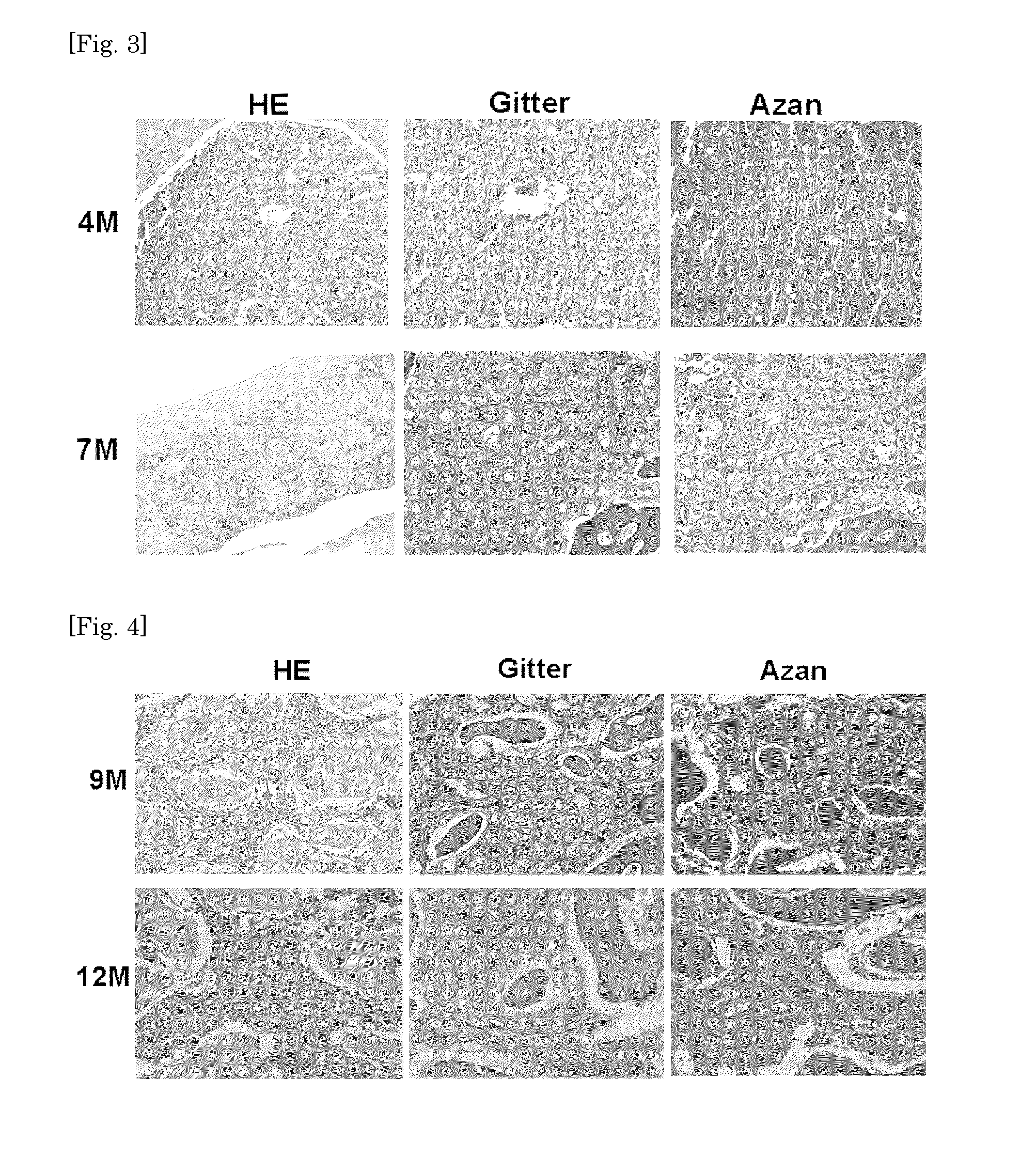Agent for treating myelofibrosis
a technology for myelofibrosis and agents, applied in the field of agents for treating myelofibrosis, can solve the problems of difficult to cure primary myelofibrosis by drug therapy, limiting the total survival rate to around 50%, and many of these underlying diseases are difficult to be radically cured, so as to and reduce the risk of recurren
- Summary
- Abstract
- Description
- Claims
- Application Information
AI Technical Summary
Benefits of technology
Problems solved by technology
Method used
Image
Examples
example 1
Confirmation of Pathology in Myelofibrosis Model Mice
[0075]A thrombopoietine (TPO) transgenic mouse developed by Dr. Kazuya Shimoda and Dr. Mine Harada (hereinbelow may also referred to as TPO mouse; see Leukemia Research 29: 761-769, 2005) was used as a myelofibrosis model mouse. In this mouse, TPO is excessively produced from TPO gene-transferred cell, leading to the expansion of megakaryocyte in bone marrow. The expanded megakaryocytes excessively produce transforming growth factor-beta (TGF-β), which stimulates bone marrow fibroblasts, promoting the secretion of collagen from the fibroblasts and resulting in bone marrow fibrillization (see FIG. 2).
[0076]TPO mice (provided from Kyushu University Animal Center) were bred in normal breeding condition, then euthanized at 4, 7, 9 or 12 months after birth, their bone marrow were collected to make tissue samples, which were stained with hematoxylin-eosin (HE) staining, Gitter staining or Azan staining, respectively, and bone marrow ima...
example 2
Production of siRNAs
[0081]siRNAs targeted to mouse HSP47 (HSP47 siRNA) were generated as drugs that suppress the activity of extracellular matrix-producing cells in bone marrow. Specifically, five HSP47 siRNAs (HSP47 siRNA-A to E) having the sequences below and a Random siRNA were generated, which were used in the experiments hereinafter. The HSP47 siRNAs were purchased from iGENE Therapeutics, Inc. (Tokyo), and the target sequences of the HSP47 siRNAs were designed from the database Refseq (GenBank Accession No. NM—009825) registered in November 2006. Random siRNA was also purchased from iGENE Therapeutics, Inc. (product name: dsRNA scramble).)
HSP47 siRNA-A:(sense, SEQ ID NO: 1)5′-UGGAUGGGAAAGAUGCAGAAGAAGGAG-3′(antisense, SEQ ID NO: 2)3′-UAACCUACCCUUUCUACGUCUUCUUCC-5′HSP47 siRNA-B:(sense, SEQ ID NO: 3)5′-UGUCUGAGUGGGUAUUUUUAGACAGAG-3′(antisense, SEQ ID NO: 4)3′-UAACAGACUCACCCAUAAAAAUCUGUC-5′HSP47 siRNA-C:(sense, SEQ ID NO: 5)5′-GAUGCGAGAUGAGUUGUAGAGUCCAAG-3′(antisense, SEQ ID NO: 6...
example 3
Properties of Primary Cultured TPO Mouse Bone Marrow Fibroblast
[0083]A primary culture of bone marrow fibroblasts was obtained by culturing the bone marrow cells from TPO mice of 4 to 6 weeks old in MEM (Minimum Essential Medium Eagle, Sigma) supplemented with 15% fetal calf serum (FCS) for 4 weeks. FIG. 6 shows the cell morphology observed by an inverted microscope. The cells had a spindle shape which is typical for a fibroblast. FIG. 7 shows the results of flow cytometric analyses using respective antibodies to mesenchymal cell markers Vimentin and α-SMA (anti-Vimentin antibody (Santa Cruz Biotechnology) and anti-α-SMA antibody (Santa Cruz Biotechnology)). The expression of both markers was observed, indicating that the cells obtained from the culture were typical bone marrow fibroblasts. The flow cytometer used in the analyses was FACS calibur (Becton Dickinson), and measured data was analyzed using CellQuest software (Becton Dickinson).
PUM
| Property | Measurement | Unit |
|---|---|---|
| Fraction | aaaaa | aaaaa |
| Molar ratio | aaaaa | aaaaa |
Abstract
Description
Claims
Application Information
 Login to View More
Login to View More - R&D
- Intellectual Property
- Life Sciences
- Materials
- Tech Scout
- Unparalleled Data Quality
- Higher Quality Content
- 60% Fewer Hallucinations
Browse by: Latest US Patents, China's latest patents, Technical Efficacy Thesaurus, Application Domain, Technology Topic, Popular Technical Reports.
© 2025 PatSnap. All rights reserved.Legal|Privacy policy|Modern Slavery Act Transparency Statement|Sitemap|About US| Contact US: help@patsnap.com



